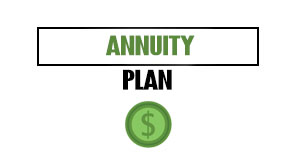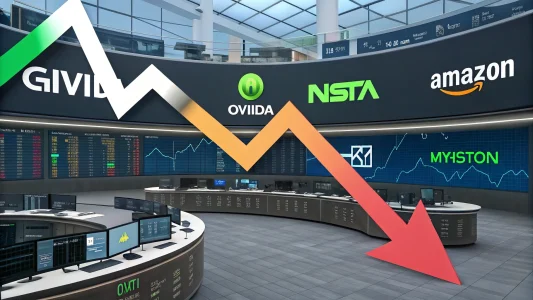Banks collected $5.8 billion in overdrafts and NSF fees in 2023 alone — and the fees keep going up. It’s money they extracted from customers who were often unaware they were even being charged in the first place. Many customers discover that they’ve paid hundreds of dollars in various bank fees over just a few months, including charges they never knew existed. These fees often hit people when they can least afford them.
Traditional banks profit from customer confusion about fee structures. This post reveals the eight most costly hidden bank fees draining your account right now, with specific strategies to avoid them altogether.
Table of Contents
Toggle1. Overdraft and Non-Sufficient Funds (NSF) Fees
Overdraft fees represent one of banking’s most profitable revenue streams, generating substantial income from customers’ financial missteps.
The Problem
Banks charge an average of $35 every time your account goes negative, even by a few cents. In some cases, institutions may allow multiple overdraft fees per day, which means a single day of poor timing can result in a customer incurring $175 or more in fees. Many banks deliberately process your largest transactions first, followed by smaller ones, maximizing the number of overdrafts they can charge.
Real World Impact
Overdraft fees hit hardest during already stressful financial periods. When your account balance is low, banks process transactions in a way that maximizes the number of fees they can charge. A single day of poor timing between automatic payments and small purchases can result in multiple overdraft charges that add up to more than the actual transaction amounts.
How to Avoid These Bank Fees
The simplest protection is opting out of overdraft coverage entirely. Your card will be declined instead of triggering fees. Set up account alerts when your balance drops below $100. Link your savings account for automatic transfers when your checking account runs low.
You have plenty of other options out there. Consider these:
- Banks that offer overdraft forgiveness for first-time incidents
- Credit unions with lower fees
- Online banks with no overdraft charges
2. ATM Fees
ATM fees might seem small individually, but they accumulate into substantial annual costs if you’re someone who takes cash out a lot.
The Problem
Out-of-network ATM fees typically range from $2 to $5 per transaction, with your bank charging you and the ATM owner often adding their own fee. International travel multiplies these costs dramatically. Foreign ATMs usually charge conversion fees in addition to withdrawal fees, and some offer dynamic currency conversion at unfavorable exchange rates.
Real World Impact
Business travelers can spend hundreds annually on ATM fees alone when accessing cash frequently overseas. Workers who grab cash during daily errands often don’t realize how quickly convenience store ATM charges accumulate over months. These fees can add up to significant amounts that people may not even notice unless they carefully review their annual banking costs.
How to Avoid These Fees
Credit unions often provide access to massive ATM networks, such as CO-OP and Allpoint, with no fees. Many online banks reimburse all ATM charges monthly. Grocery stores offer cash back with purchases, eliminating the need for ATM visits entirely.
Smart planning prevents most ATM fees:
- Withdraw larger amounts less frequently
- Use bank branches during business hours
- Download ATM locator apps for fee-free machines
- Choose banks with extensive ATM networks
3. Monthly Maintenance Fees
Banks advertise free checking accounts, but then impose monthly maintenance fees that can end up costing you hundreds of dollars annually.
The Problem
Some banks charge monthly maintenance fees ranging from $12 to $25. So, even if you have a “free” account, it’s an expensive proposition. If you want to waive these fees, many banks require minimum balances, sometimes exceeding $1,500. Some of these fee waivers depend on direct deposits, the size of your transactions, or whether you have a sufficient balance in all the banks’ products.
Real World Impact
Account transitions often trigger unexpected fees. In one case, a student might open a checking account at the age of 19 with no monthly fees. After graduation, the bank automatically converts her account to standard checking with a $15 monthly charge. She could pay hundreds of dollars that year before even noticing. In another example, a retiree’s pension switches from direct deposit to mailed checks, triggering $25 monthly maintenance fees on his senior account.
How to Avoid These Fees
Try an online bank. They frequently offer genuinely free checking with no balance requirements or conditions that you don’t learn about until later. Credit unions typically have lower minimum balance thresholds and more reasonable fee structures. If you prefer traditional banks, ensure that you maintain the required direct deposit amount or maintain sufficient combined balances.
Consider these options:
- Online only banks with no physical locations
- Credit unions in your area
- Community banks that have lower minimums
- Employer banking partnerships with fee waivers
4. Wire Transfer and Money Movement Fees
Moving your own money between accounts or sending funds to others is another significant source of fees that most banks don’t advertise up front.
Banks’ Fees for Moving Money
Domestic wire transfers typically cost between $15 and $30, while international wire transfers can range from $65 to $100 or more per transaction. Banks may also charge for seemingly simple transfers between your accounts at different institutions. Some banks even impose fees for expedited ACH transfers or same-day processing.
Real World Costs
Emergencies often reveal the actual cost of wire transfers. In one example, a woman whose father might have a medical emergency abroad could need to send money immediately. The wire transfer fee may be $45, and the receiving bank may charge an additional $25. In another example, a homebuyer might learn about wire fees during the purchase process when a delayed wire transfer could nearly derail the closing. He’s forced to pay extra fees to expedite the process.
Money Moving Alternatives
Modern payment apps eliminate most transfer fees for personal transactions. Zelle, Venmo, and PayPal allow you to move money instantly between friends and family at no cost. (Of course, they make a mint on the fees for delivering that money to your bank account.) International transfers work better through specialized services that offer better exchange rates and lower fees.
Free alternatives include:
- ACH transfers for non-urgent domestic payments
- Online money transfer services like Wise for international transfers
- Credit union wire services with reduced fees
- Bill pay systems for recurring payments
5. Paper Statement and “Convenience” Fees
Some banks charge fees for services that were once standard, rebranding basic customer service as premium conveniences.
The Hidden Cost of Traditional Banking
Paper statement fees can range from $2 to $5 per month at certain banks, adding up to $60 annually for customers who prefer physical records. Telephone banking assistance may incur a cost of $5 or more per call at some banks, even for simple balance inquiries. Bill payment by phone may incur fees of $10 to $15, despite bank representatives taking only a few minutes to process the payment.
How Convenience Becomes Expensive in Real Life
Paper statements and phone banking can create unexpected costs. In one example, an elderly customer might refuse to use online banking and pay $5 monthly for paper statements because she prefers physical records for tax preparation. In another case, a business traveler’s automatic payment could fail during a trip, and he might call to make an emergency payment by phone, only to discover a $15 convenience fee after the transaction is complete.
Eliminate Unnecessary Bank Fees
Electronic statements provide the same information without monthly charges and often offer better organization through search functions. Mobile banking apps handle most transactions that previously required phone calls. Automatic bill pay prevents late fees and eliminates the need for emergency phone payments.
Cost-cutting strategies include:
- Download PDF statements instead of getting paper copies
- Use online bill pay systems
- Order checks from discount third-party companies
- Set up account alerts to avoid emergency calls
6. Early Account Closure and Dormant Account Fees
Banks penalize customers for both leaving too quickly or staying too long without activity, creating profit from account lifecycle management.
Timing Penalties and Inactivity Charges
Early closure fees of $25 to $50 can be incurred at some banks when you close an account within 90 to 180 days of opening it. In many cases, banks will start to charge you dormant account fees after 12 to 24 months with no transactions. That may cost $5 to $15 monthly until the account is empty.
When Life Triggers Unexpected Bank Fees
Long absences or job changes can trigger account fees you’re not expecting. For example, a service member might deploy overseas for 18 months, focusing on his mission rather than banking. When he gets back, he learns his account racked up hundreds of dollars in dormant fees. In another case, someone might switch jobs and open a new account with her employer’s preferred bank, then close her old account after two months, triggering an early closure penalty.
Protecting Your Accounts
Maintain accounts past the minimum required periods before closing to avoid penalties. Small automatic transactions like $5 monthly transfers keep accounts active during extended absences.
Simple prevention methods:
- Schedule automatic savings transfers before deployment
- Consolidate multiple unused accounts into one primary account
- Contact banks directly about military service exemptions
- Set calendar reminders for minimum account duration periods
7. Foreign Transaction and Currency Exchange Fees
International purchases and travel expose customers to multiple layers of fees that banks rarely explain clearly before trips abroad.
Hidden International Charges
Foreign transaction fees often add 2.5% to 3% to international purchases, whether you travel or shop online from foreign retailers. Dynamic currency conversion at merchant terminals usually offers unfavorable exchange rates and additional fees. Some banks even charge separate fees for international debit card usage on top of currency conversion costs.
The True Cost of Travel
International purchases can trigger multiple layers of fees. In one example, a traveler’s week abroad might include thousands in expenses that could trigger hefty foreign transaction fees from her bank. Additionally, she may accept dynamic currency conversion at several merchants, potentially paying significantly more due to unfavorable exchange rates. In another case, someone may discover international fees when their streaming subscription, processed through a foreign subsidiary, adds unexpected charges to their monthly statement.
Smart International Banking
Travel-focused credit cards eliminate foreign transaction fees while offering better fraud protection than debit cards abroad. Many online banks waive international fees as standard features, rather than providing them as premium perks.
International money-saving tips:
- Always decline dynamic currency conversion at the point of sale
- Notify banks of travel dates to prevent card blocks
- Use airport ATMs sparingly due to higher fees
- Research which cards work best in your destination country
8. Excessive Bank Fees on Savings Accounts
Banks impose transaction limits on savings accounts that can generate unexpected fees for customers who use these accounts like checking accounts.
The Transaction Trap
Federal regulations historically limited savings account withdrawals to six per month, and many banks continue to charge $1 to $5 for each excess transaction, despite recent rule changes. Most customers remain unaware that their savings accounts have transaction restrictions. Banks count transfers to checking, ATM withdrawals, and online bill payments toward these limits.
When Savings Become Costly
Savings account transaction limits can catch customers off guard. In one example, a college student might use her savings account for daily expenses, thinking that higher interest rates make it a smarter choice than a checking account. She could pay substantial excess fees before realizing the problem. Someone facing a medical emergency that requires multiple urgent transfers may trigger significant penalties across several transactions.
Strategic Account Management
Keep frequently accessed emergency funds in checking accounts rather than savings to avoid transaction limits. Plan larger, less frequent transfers instead of multiple small withdrawals. Many online banks have eliminated excess transaction fees entirely.
Effective strategies include:
- Keep emergency funds in a checking account for immediate access
- Schedule planned monthly transfers on specific dates
- Use high-yield checking accounts for active money management
Stop Sneaky Bank Fees and Reap the Rewards
Hidden bank fees don’t have to be inevitable. They are merely streams of profit that banks establish specifically to take advantage of uninformed customers. There are many alternatives for each of the fees mentioned in this guide, and you can try these workarounds today.
Start by taking a hard look at your last six months of statements to pinpoint the fees you’re currently paying. Calculate your annual costs and research fee-free alternatives in your area. Many customers save $200 to $500 yearly by switching to credit unions or online banks.
Your banking relationship should build wealth, not drain it through sneaky charges.
Featured Image Credit: Photo by maitree-rimthong; Pexels
















